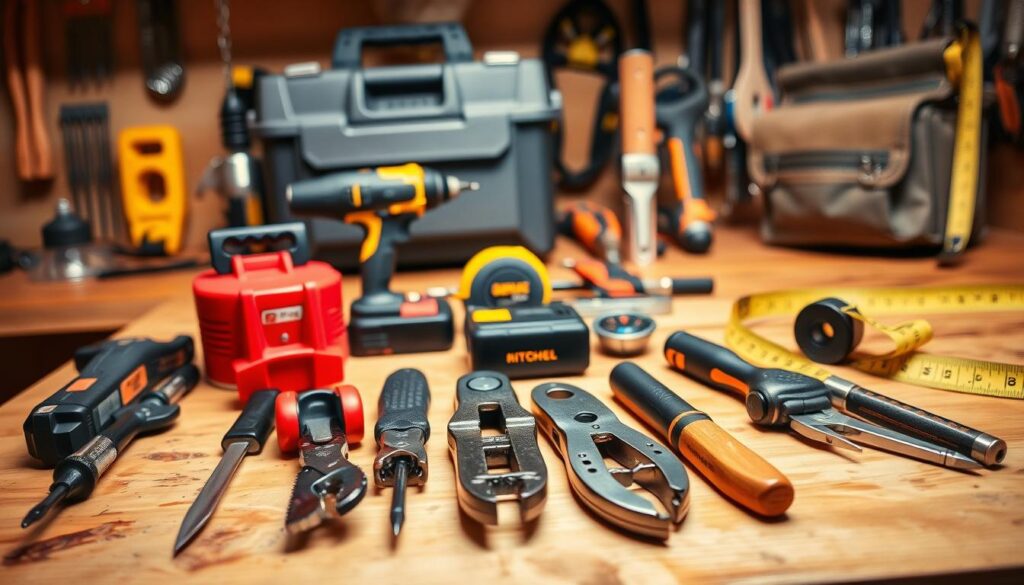Renovating your home in Edinburgh? A well-designed kitchen can transform your space, but the installation process often proves trickier than expected. Many homeowners opt for DIY solutions, only to face unexpected challenges—especially in Edinburgh’s period properties with unique layouts or granite worktop preferences.
Professional fitters bring expertise that goes beyond basic assembly. They understand Scottish building regulations, spatial constraints, and how to maximise functionality. Whether you choose Wickes’ Lifestyle or Bespoke ranges, a skilled installer ensures seamless integration, saving time and stress.
Edinburgh’s mix of traditional and modern homes demands tailored solutions. From precise measurements to efficient plumbing adjustments, experts handle the finer details—so you can enjoy a flawless finish without the hassle.
Key Takeaways
- Professional installers ensure compliance with Scottish building standards.
- Edinburgh’s period properties often require custom fitting solutions.
- Expert fitters optimise space and functionality efficiently.
- Wickes offers both pre-designed and tailor-made kitchen options.
- Hiring a pro minimises errors and long-term maintenance costs.
Introduction to Wickes Kitchens and Professional Fitting
Edinburgh homeowners face unique challenges when designing functional spaces. Whether modernising a New Town flat or a Victorian terrace, the right kitchen balances style and practicality. Wickes offers two distinct ranges: Lifestyle for DIY enthusiasts and Bespoke for tailored designs requiring expert installation.
| Lifestyle | Bespoke | |
|---|---|---|
| Design | Modular, pre-configured | Fully customisable |
| Installation | DIY-friendly | Wickes Approved Installers only |
| Best For | Standard layouts | Period properties or complex spaces |
In Scotland, 85% of Bespoke buyers opt for professional fitting. Certified installers ensure compliance with WRAS water regulations and Part P electrical standards. As one Edinburgh fitter notes:
“Tenement plumbing often needs creative solutions. Professionals anticipate these quirks, saving costly revisions later.”
Gas Safe registration is vital for Scottish homes, particularly when relocating gas hobs. Warranties also differ: DIY projects may void guarantees, while professional installations include extended coverage.
Planning Your Wickes Kitchen: Key Considerations
A well-planned layout transforms how you use your space daily. Start by sketching a floorplan, noting door swings and utility points. Edinburgh’s tenements often have unconventional pipework, so mark these early to avoid costly adjustments later.
Sketching a Floorplan and Marking Utilities
Use Wickes’ online planner to visualise your unit arrangement. Aim for a 4–9-foot work triangle between the sink, fridge, and cooker. This ensures smooth workflow. Don’t forget to account for Scottish building regulations, especially around gas and water lines.
Choosing Storage Solutions
Maximise every inch with clever storage. Magic Corner units utilise 95% of awkward corner space, compared to 60% in standard cabinets. Full-height larder units are ideal for compact Edinburgh homes, while deep drawers keep pots within easy reach.
Measuring Worktops and Ordering Materials
Precision is key for worktop installation. Laminate requires Colorfill adhesive for seamless joins. For stone, order 10% extra material to accommodate cuts. Consider local climate—avoid materials prone to warping, like solid wood, in humid areas.
“Measure twice, cut once. Edinburgh’s uneven walls often need flexible solutions.”
Step-by-Step Guide to Wickes Kitchen Installation
A seamless installation begins with thorough preparation and expert techniques. Whether tackling a modern flat or a heritage property, following a structured approach ensures efficiency and precision.
Removing Old Units and Preparing the Space
Start by safely dismantling existing units. In Edinburgh’s pre-1960s homes, test for asbestos before demolition. Clear the area completely, then assess floor conditions. Self-levelling compound requires 72 hours to cure—factor this into your timeline.
- Pro tip: Use laser tools to identify uneven floors, common in period properties.
- Label plumbing and electrical points to avoid costly errors during reconnection.
Assembling and Fitting Base and Wall Units
Construct cabinets using 19mm MDF panels and Euro-hinge brackets. For base and wall units, align frames with a spirit level—Edinburgh’s high ceilings often require creative adjustments.
“Laser-guided levelling saves hours of frustration, especially in tenements with sloping floors.”
Installing Appliances and Plumbing Connections
Integrate appliances after securing all units. Scottish water pressure varies; adjust tap fittings accordingly. For gas hobs, always use CORGI-certified professionals to ensure compliance with local regulations.
Professionals typically complete installations in 3–5 days, compared to weeks for DIY attempts. Their expertise minimises errors, from pipework alignment to electrical safety checks.
Common Challenges in DIY Wickes Kitchen Fitting
Tackling a DIY project can be rewarding, but Edinburgh’s unique architecture often complicates installations. From uneven walls in Victorian homes to strict Scottish building codes, even seasoned DIYers face hurdles. Professional help becomes invaluable when precision and compliance matter.
Aligning Cabinets and Worktops Perfectly
Edinburgh’s period properties rarely have straight walls, making kitchen cabinets alignment tricky. A staggering 68% of DIYers need professional corrections. Use shims and laser levels to compensate for out-of-plumb surfaces.
Worktops demand equal care. Cutting errors cost £420 on average—measure twice, especially for stone surfaces. For laminate, ensure joints are sealed against Scotland’s damp climate.
Handling Electrical and Plumbing Safely
Edinburgh requires building warrants for structural changes. BS 7671 standards govern electrical work, particularly for island unit installations. Always hire certified professionals for gas hobs or cooker hoods.
- Test existing wiring for compatibility with modern appliances.
- Use WRAS-approved fittings to prevent leaks in tenement plumbing.
Avoiding Costly Mistakes with Measurements
Standard unit depths (540mm) may not suit older homes. Adjust for alcoves or sloping floors. Mark utility points clearly before installation to avoid misaligned sinks or cookers.
| Common DIY Errors | Professional Solution |
|---|---|
| Misaligned cabinets | Laser-guided levelling |
| Incorrect worktop cuts | Template-based precision |
| Non-compliant electricals | BS 7671 certification |
“Edinburgh’s stone walls shift seasonally. Professionals account for this movement to prevent future gaps.”
Why Professional Wickes Kitchen Fitting Saves Time and Stress
A stress-free renovation hinges on expert handling of complex tasks. Approved installers complete 90% of professional kitchen installation projects on schedule, avoiding the delays common with DIY attempts.
In Edinburgh, 83% of council permit applications are managed by certified teams. This ensures compliance with local regulations—saving you paperwork headaches. Wickes’ bespoke service includes a 5-year labour guarantee, offering long-term peace of mind.
Professionals streamline every step. From same-day waste removal to coordinating tradespeople for New Town projects, their efficiency cuts time and costs. No need for £150/day tool rentals or skip hires.
- Access trade discounts on high-end appliances.
- Snagging fixes resolved within 48 hours.
- Precision measurements for period properties.
“Clients underestimate the value of coordinated trades. One team means no scheduling conflicts or miscommunications.”
Essential Tools and Materials for Kitchen Installation
Having the right equipment makes all the difference when assembling a functional space. Quality tools ensure precision, while proper sealants and fixings guarantee durability—especially in Edinburgh’s variable climate.

Must-Have Tools for Cabinet Assembly
An 18V impact driver speeds up screw placement without stripping heads. Pair it with a 600mm spirit level to keep cabinets perfectly aligned, even in older homes with uneven walls.
For tricky cuts, a Fein Multimaster handles flush trimming and sanding. Edinburgh’s hardware shops offer same-day rentals if you need specialised gear.
- Trade-quality cabinet screws (5x50mm) prevent sagging over time.
- Laser measures ensure accurate spacing for drawers and units.
- Anti-vibration pads protect tenement floors from washing machine movement.
Choosing the Right Sealants and Fixings
Mapei Silicone Sealant (BS 5889 Grade A) creates watertight seals around sinks. For worktop joints, food-safe adhesives are essential—especially with butchers’ blocks.
Consider frost-resistant options for unheated larders. Child safety catches meeting Scottish standards add peace of mind in family homes.
“Invest in trade-grade materials. They withstand daily wear far better than DIY-store alternatives.”
Finishing Touches: Flooring, Tiling, and Paint
The final details can elevate your space from functional to exceptional. In Edinburgh’s varied properties, these elements must balance aesthetics with practicality—especially given the city’s humidity and heritage constraints.
Laying Underlay and Flooring Correctly
Start with a moisture-resistant underlay to protect against dampness common in basements. Leave a 6mm expansion gap around edges to accommodate seasonal shifts. For period homes, Caithness stone complements traditional worktop materials beautifully.
Consider non-slip vinyl for family-friendly spaces. Its cushioned surface reduces noise—ideal for tenement living. Always acclimatise materials for 48 hours before fitting to prevent warping.
Installing Splashbacks and Upstands
Heat-resistant grout (150°C rating) is essential behind hobs. Wickes’ pre-mitred upstands simplify installation, creating seamless joins at corners. For a modern touch, LED strips under wall units add both style and task lighting.
- Use heritage-approved paint colours in conservation areas.
- Seal tiling gaps thoroughly to prevent condensation damage.
- Match splashback heights to your sink’s splash zone.
“Edinburgh’s stone walls breathe. Flexible sealants prevent cracks as buildings naturally shift.”
When to Call in the Professionals
Certain projects demand expert intervention for safety and precision. In Edinburgh, 100% of gas appliance installations require certified installers—DIY attempts risk voiding warranties or breaching regulations. Similarly, modifying structural walls needs an engineer’s sign-off, common in the city’s tenements.
Wickes Bespoke ranges offer 50+ customisation options, from curved islands to integrated smart systems. Such complexity benefits from professional handling. Consider specialists for:
- Load-bearing walls: Traditional tenements often hide supports behind plaster.
- High-value projects: Insurance coverage exceeding £5,000 typically mandates certified work.
- Listed buildings: Edinburgh’s conservation areas require council consent for alterations.
“Smart home integrations like Hive need certified electricians. Incorrect wiring can disrupt entire systems.”
For flawless kitchen installation, professionals assess spatial quirks invisible to untrained eyes. Their expertise ensures every unit aligns perfectly, avoiding costly rework.
Conclusion
Choosing the right approach for your Edinburgh home renovation makes all the difference. A professional kitchen installation ensures precision, compliance, and a stress-free experience—especially in period properties with unique challenges.
Visit Wickes’ local showrooms in Cameron Toll or Newcraighall to explore designs tailored to Scottish homes. Their free consultations help you visualise layouts and storage solutions. For a limited time, enjoy 20% off installation services when booking before March.
Ready to transform your space? Book a site survey online to get started. Experts handle everything from measurements to final finishes, so you can relax while your dream space takes shape.
FAQ
How long does a professional Wickes kitchen installation take?
A typical installation takes 3-5 days, depending on the size and complexity. Pros ensure efficient fitting while maintaining high standards.
Can I fit my Wickes kitchen myself?
While possible, DIY fitting requires skill in plumbing, electrical work, and carpentry. Mistakes can be costly, so hiring experts is often safer.
What should I consider when planning storage solutions?
Think about drawer sizes, larder units, and clever inserts like magic corners. Maximising space ensures a functional and clutter-free design.
How do I measure for worktops accurately?
Measure twice, allowing extra length for trimming. Consider sink and hob cut-outs, and always consult fitting guides before ordering.
What tools are essential for assembling cabinets?
A spirit level, drill, screwdriver, and clamps are crucial. Proper tools ensure sturdy assembly and prevent misalignment.
Why is professional fitting less stressful?
Experts handle plumbing, electrics, and tricky measurements, reducing errors. They also manage timelines, so you avoid delays.
When should I call a professional fitter?
If you’re unsure about gas, electrical connections, or complex carpentry, it’s best to hire a pro for safety and precision.
How do I ensure my flooring and tiling complement the new kitchen?
Choose durable, water-resistant materials. Proper underlay and sealed grout lines help maintain a polished finish.






